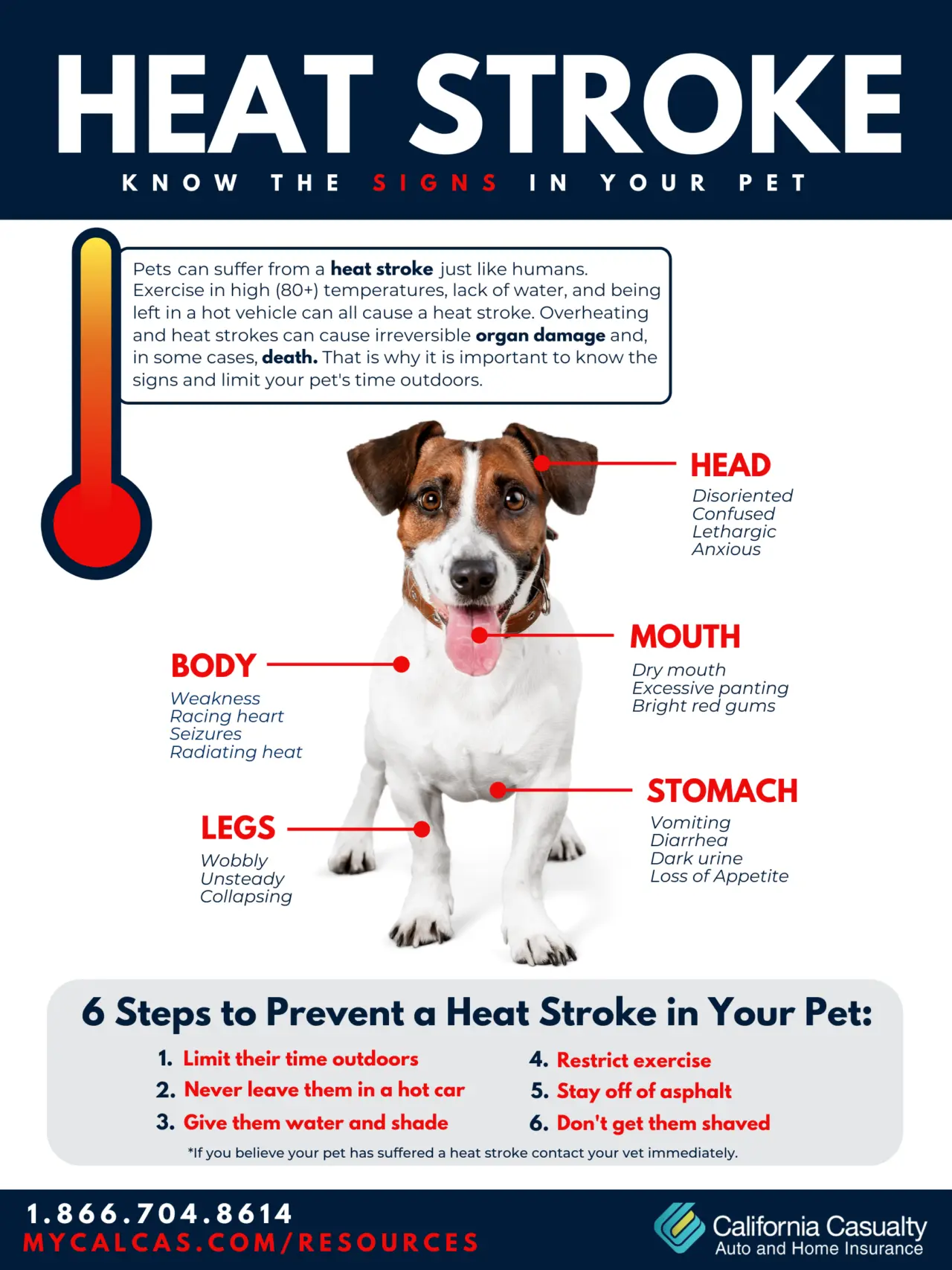
by California Casualty | Homeowners Insurance Info, Safety |
School’s out, which means if your child is old enough, he or she may find themselves home alone without you. Navigating the house on their own, or with a babysitter, can definitely help kids build independence. However, you also want to make sure they’re safe.
For those times when your child may be home alone or with a babysitter, here’s a list of important summer safety tips.
Lesson 1: Basic First Aid
Decide what first aid your child may be capable of providing. If he or she gets a small cut or scrape, for example, your child can clean the wound and put on a band-aid.
What You Can Do: Prepare a first aid kit with those supplies that you would like him/her to use for such things as minor cuts, scrapes, and burns. Go over the items in the first aid kit and show your child how to use them. Then have your child role-play and practice with them. Discuss when they might need to call for help if the injury seems more serious than they can treat with the kit.
Pro Tip: If your child has a smartphone or device and is allowed to use it, download the Red Cross First Aid App.
Fire safety at home is important. Fires can be scary but even the sound of the smoke alarm can be frightening.
What You Can Do: Let your child hear the sound so they know what to expect. Then discuss the fact that they need to leave the house and contact a trusted adult such as a neighbor or someone by phone. If there’s an active fire that they see, they can call 9-1-1. Since your child can be anywhere in the house when the smoke alarm goes off, practice how to leave each room. Remember the rule of 2/2/2. Practice two ways out of every room, two times of the day (day and night) at least two times a year.
Lesson 3: Emergency Contact List
Help is just a phone call away. Share the emergency list with your child.
What You Can Do: Post the list of parents’ work and cell numbers, family, and friends who will be available to your child as needed. Include neighbors who can be a nearby onsite resource. The list also should include 9-1-1 for big emergencies (and your house address should the dispatcher need it). However, explain to your child the types of situations that would necessitate dialing 9-1-1.
Pro Tip: Involve your family member or neighbor and have your child give them a quick call to ask if it’s okay to put their names on your call list. That will give your child practice making the call.
Lesson 4: Bad Weather or Emergency Situations
Even in the summer, bad weather can strike. If your child is at home alone or with a sitter and there is a severe storm or another emergency situation, make sure they know what to do.
What You Can Do: Make sure your child or sitter knows how to check the weather, on their phone or your local weather channel, and have them sign up for emergency alerts. Also, make sure they know where you keep your emergency kit if they need to take shelter. Go over the family disaster plan with them so they know exactly who to call and where to go. It’s important to discuss emergency scenarios with your child and sitter before you leave them alone, so they won’t panic and will know exactly what to do.
Lesson 5: Home-Alone Rules
Depending upon your child’s age and maturity, and your own comfort level, set rules for when they are home alone or with a sitter.
What You Can Do: Go over the rules with your child. Practice them and explain their importance. And then write them down as a reference, that they can look at. Here are some rules you may consider.
Limit cooking and stay away from fire sources.
Decide if your child will be allowed to use the stove, microwave, or toaster. If not, make sure there are plenty of cold meal options and snacks. If you do allow cooking of any kind, review the safety rules. Make sure your child knows what materials are dangerous for the microwave, and not to fish out a stuck piece of toast from the toaster with a metal fork. Decide on the rules for knives. Make sure your child doesn’t do anything alone that he or she hasn’t already done successfully under your supervision. Finally, ensure that your child knows where the fire extinguisher is and how to use it in the event of a kitchen fire. (Also, if this happens, your child should call an adult and 9-1-1.)
Keep the house locked and don’t let strangers know you are alone.
Make sure all doors and windows are locked when your child is home alone or with a sitter. If there is a security system that will be set, teach your child how to enable and disable it. Let your son or daughter know not to answer the door, even for delivery people. If someone calls and asks for you, provide a script of what to say; for example, “he or she is busy right now. Can I take a message?” Write that by the phone so your child doesn’t have to remember it. Be clear on whether your child is allowed to leave the house, and under what circumstances. If he or she does leave for any reason, instruct your child to tell you. You should always know where your child is.
Set rules for the phone, computer, smart devices, and TV.
Screen time is a big draw to kids home alone. Set the rules so they know what is allowed and what is not. You may allow gaming but not social media, or a movie marathon but not long text conversations. Make sure your child does not share that they are home alone, whether on social media, text or other interactions.
Specify the way your child will check-in.
You will want reassurance that your child is all right. Ask him or her to check in with you at specified times and in specific ways. Decide whether a text or call will suffice and how often. Make it a rule that they have to answer you right away if you call.
If your child is new to being left alone, start small. Leave for a short errand. Praise your child for following the rules. Continue to model safety practices, and before long, you’ll be surprised at how responsible your child can be when home alone.
This article is furnished by California Casualty, providing auto and home insurance to educators, law enforcement officers, firefighters, and nurses. Get a quote at 1.866.704.8614 or www.calcas.com.
by California Casualty | News |
To say that becoming the Strategic Account Manager for one of the most significant partners in our company’s history could be a little intimidating is an understatement. The partnership between the two organizations has- 1. Influenced our company’s affinity insurance...

by California Casualty | Calcas Connection, Safety |
If you’ve ever wrestled a wriggling, uncooperative toddler while trying to apply sunscreen, you’re not alone. It’s summer and the kids are excited, which means sun safety sometimes falls by the wayside. Even your older kids may ditch their hats and sunglasses to bask in the sun or they may “forget” to reapply sunscreen after a swim.
Yet it’s so important to protect young skin, which is especially vulnerable to the sun’s damaging rays. Just one or two blistering sunburns can double your child’s lifetime risk for melanoma, according to MD Anderson Cancer Center. Given the high stakes, how are you possibly going to get your kids to practice sun safety? Don’t worry. Unlike the sunscreen-on-the-toddler scenario, we’ve got you covered.
1. Get them into the habit of applying sunscreen.
Whether it’s cloudy or sunny, make sunscreen a part of your – and their — daily routine. Choose a broad-spectrum sunscreen that protects against both UVA and UVB rays with a Sun Protection Factor (SPF) of at least 30.
Note that children’s sunscreens often have the same ingredients as adult versions. They’re just packaged in a cuter bottle. If that cute bottle gets your child to apply it, it’s worth the investment. The bottom line: the best sunscreen is the one your child agrees to wear.
-
- Lead by example and apply sunscreen yourself at least 30 minutes before you go outside. Depending on your child’s age and ability, help or encourage them to do the same.
- For younger kids, make it fun.
- Put “cheetah” spots of sunscreen and have them rub them in.
- Pretend the sunscreen spray is a dragon’s breath.
- Set a timer and count down together. Sing a song that lasts as long as the application.
- Ask them to stand in front of a mirror and watch to see if you’ve missed a spot.
- For older kids, add sunscreen to their daily chore chart.
- If your child is sensitive to the feel of sunscreen, try different types. Sunscreen comes in spray, stick, and lotion and can be thick or thin, scented or unscented.
Pro Tip: Check the active ingredients, and look for zinc oxide or titanium dioxide. These sunblock ingredients are less irritating if your child has sensitive skin.
2. Teach your child when to reapply sunscreen.
If you’re out in the sun, you’re going to want to reapply your sunscreen to avoid burning. A good rule of thumb is to reapply when kids are wet and sweaty, after swimming, or before the timeframe stated on the sunscreen label. Remember to use a waterproof sunscreen that won’t come off in the pool or when they sweat and that sunscreens need about 30 minutes to absorb into your skin so account for the overlap time.
-
- For older elementary kids and teens, have them set a timer.
- For younger kids, give them a few minutes warning. Then ask where he or she wants to be when you reapply. Having a choice gives them some control and encourages cooperation.
- Schedule reapplication right before a break for a favorite snack. (Snacks after sunscreen!)
3. Let them choose their sun protective wear.
Sun protective clothing, hats and sunglasses help keep dangerous rays away from sensitive eyes and skin. Involve your child in the choice so that they are more likely to wear the item.
-
- Go shopping with your child for hats, sunglasses, and sun-protective clothing. Let them pick out an ensemble…. even if it doesn’t match (sorry, moms!).
- Consider UV blocking shirts that provide added protection. Avoid tank tops that expose kids’ shoulders.
- Find a pair of sunglasses that fit your child well. Add a strap that will keep them in place during energetic play.
- Model wearing your own protective sun gear. Young children might enjoy a matching set! Older kids may be more likely to enjoy “trendy” sunglasses or hats. So, look for ones that have their favorite character or celebrity on the package.
4. Know when to go out and when to seek shade.
The sun’s rays are strongest during midday. Encourage your child to stay out of the sun during the hottest times. Sun safe hours are before 10 am and after 4 pm; that’s when you can offer unlimited outdoor play. During other times, you will want to limit your child’s time in the sun and encourage them to seek shade when possible.
-
- Play the shadow game. If your child’s shadow is shorter than he/she is, it means it’s time to find shade. Challenge your child to find all of the shady spots nearby.
- Set up a shady play area. Include drinks, snacks, games, chalk, balls, dolls, and even a water table to entice children to stay there. For the beach or places where there is no shade, play tents and sun canopies can protect from UVA and UVB rays.
- Summer rides in the car can also expose your child to dangerous UVA rays which pass right through glass. Add transparent window films to your car windows or provide a light blanket to cover your child’s exposed legs.
5. Explain sun safety in an age-appropriate way.
You want your child to understand why sun safety is important. That ultimately will help them to practice it. Do it in a way that your child can understand and not be frightened.
-
- For preschoolers, you can share that the sun can burn you and that will hurt.
- For elementary school students, share the basics and say that sunburns can damage your skin.
- For teens, you can go into detail and share the long-term damage that can occur later in life.
- And for those young adults looking to get a “healthy summer tan,” let them know that there is no such thing. Even tans will damage their skin, and cause wrinkles. Encourage them to use tanning lotions with sunscreen instead.
Be consistent with sun safety precautions and you and your family will enjoy the summer sun that much more!
This article is furnished by California Casualty, providing auto and home insurance to educators, law enforcement officers, firefighters, and nurses. Get a quote at 1.866.704.8614 or www.calcas.com.

by California Casualty | Pets |
It’s time to go for a w-a-l-k. (Cue the excited wags and barks.) But walking in the summer heat presents some challenges for our fur babies. From hot pavements to high temperatures, conditions can be dangerous for your pup.
Follow these tips to safely walk your dog in the summer heat, including signs to watch out for in case of heatstroke.
Tip #1: Time your walks for the coolest part of the day.
Even when it’s hot outside, there are times of day when it’s a little less hot. Plan around the temperatures, scheduling an early morning walk or an evening stroll. In general, before 9 am and after 6 pm are usually the coolest times.
Tip #2: Bring water along.
Bring a water bottle and a dog bowl to give your dog a drink on hot walks. In addition, consider a spray mist bottle or a wet towel to use to cool your dog down.
Pro Tip: Introduce the bowl and the sprayer at home first with your dog to make sure your pup is comfortable with them.
Tip #3: Seek shade.
Walk in the shade as much as possible and choose a route where you can stop in the shade. Walk on the grass if possible. If not, the concrete sidewalk is generally cooler than the street made from asphalt. If your dog lies down in the cool grass, let him. It’s his way of regulating his temperature.
Tip #4: Check the pavement.
When the temperature is just 86 degrees outside, the pavement can reach a sizzling 135 degrees! That’s way too hot for your pup’s sensitive paws. Before you walk, check the sidewalk or road. Put the back of your hand directly on the pavement. If you can keep it there comfortably for 5-10 seconds, it’s okay to walk. If not, avoid the asphalt and concrete at all costs.
A word about dog boots: You can buy dog boots or paw protectors to protect against hot pavement. Look for non-slip, water-resistant shoes that fit your dog’s paws well and stay on. Also, choose breathable ones. Since dogs do sweat through their paws, that will help keep them comfortable.
Tip #5: Protect against sunburn.
If your dog has a shorter coat or bare spots that can burn, consider dog-friendly sunscreen.
For dogs with long fur, you can give your dog a summer haircut, but don’t shave her to the skin. Dogs need an inch of fur to protect against sunburn.
Tip #6: Know when to turn back.
Your dog will communicate that he has had enough. If he continues to lie down and pant, that’s a signal that the heat is getting to him. Go slowly, and if your dog seems unenthused to walk, don’t push it. Head back and enjoy some air-conditioned indoor time.
Tip #7: Know the signs of burned paws.
Burned paws are painful for our pups. Make sure you check your fur baby’s paws after summer walks. Look for these signs of possible burns:
-
- Limping
- Excessive biting of feet
- Discolored pads, redness or blisters on the paws
Tip #8: Know the signs of heatstroke in dogs.
Heat exhaustion is not just for people. Our pets can get heatstroke, too. In fact, it can be very serious and even deadly. That’s because dogs don’t have sweat glands. Instead, they rely on panting to cool themselves down. When that doesn’t work, the heat builds up in their bodies, causing heatstroke.
Some dogs are more susceptible. These include older dogs, dogs with shorter snouts, obese dogs, and dogs battling illness. Watch for these signs:
-
- Excessive panting and drooling
- Difficulty breathing
- Fever (dog’s nose is dry and hot rather than wet and cool)
- Bright red, gray, purple, or blueish gums
- Rapid pulse
- Weakness
- Vomiting or diarrhea
- Lack of urine
- Muscle tremors
- Dizziness

If your dog exhibits signs of heatstroke or has burns on his or her paws, call your veterinarian immediately. You may be asked to bring your pet in for treatment.
For emergencies like this, pet insurance can help. Remember, you can easily add pet insurance from Pet’s Best to your California Casualty auto or home policy. Find out more about what pet insurance can cover by talking with a California Casualty customer service representative today.
This article is furnished by California Casualty, providing auto and home insurance to educators, law enforcement officers, firefighters, and nurses. Get a quote at 1.866.704.8614 or www.calcas.com.

by California Casualty | Educators |
It’s the end of the year and you’re feeling burnt out. You have no motivation to teach. At this point, you may be numb and simply just going through the motions, day in and day out. There’s a name for what you’re feeling. It’s called languishing, and you’re not the only one feeling it…
What is ‘languishing’?
Languishing is the opposite of flourishing. It’s a combination of apathy, restlessness, and an overall lack of interest in things that ordinarily would bring you joy. Languishing is not a mental illness; it’s a mental state of low energy.
What causes languishing?
For many people, languishing was brought on by the uncertainty and isolation of the COVID-19 pandemic. It’s as if we’ve been on high alert for two years and we’re simply running out of mental energy. It’s a feeling not limited to teachers or to U.S. citizens. An international study
of nearly 10,000 people in 78 countries found at least 10 percent were languishing.
Are you languishing?
Maybe. See if you share any of these common signs and symptoms:
-
- Isolating yourself from friends and family
- Going through the motions
- Struggling with basic tasks
- A feeling of numbness
- A lack of self-worth
- A feeling of restlessness but not knowing what to do
- A tendency to miss work lately
If you are susceptible to anxiety and depression, you might be more prone to languishing.
Is languishing the same as depression?
No. Languishing and depression share many of the same characteristics but they are not the same. Depression is a mental illness. With depression, you may experience fatigue. You may sleep too much or too little, and have negative emotions and suicidal thoughts.
Languishing is not a mental illness; neither is it a description of mental health. It’s somewhere in between. With languishing, you experience negative emotions. You feel as if you’re not in control of your life. You may feel empty. For some people, languishing could be a risk factor for a mental illness like depression.
What can you do about languishing?
No one wants to feel empty and numb. It’s exhausting and not good for your quality of life. That’s why it’s important to recognize your feelings and do something about them. Fortunately, there are simple self-care strategies that you can take to recharge your emotional batteries and restore your spark. Here is a sampling.
-
- Take time off. You probably work a lot, after school, evenings and weekends. Give yourself a break. If you can’t take a couple of personal days, then at least give yourself weekends off. Take the time to recharge so that you can come back reenergized.
-
- Find your happy place. Spend time doing what makes you happy, not what should make you happy. Carve out some time each week for a favorite hobby, a coffee date with a dear friend, or simply some precious alone time with a favorite book. Choose something that you look forward to doing, and that will be the right thing for you.
-
- Practice self-care. Eat well. Get enough sleep. Taking care of your body will help put you in the right place to support your mental wellbeing.
-
- Change your scenery. Take a walk in the park. Stroll along a body of water. Find a quiet place to enjoy nature. Just getting away from your normal daily scene can do wonders to perk up your thoughts. Bring a friend and you can enjoy wonderful social connections, too.
-
- Perform acts of kindness. Make someone a cup of coffee. Help a work colleague. Pay the toll for a stranger. Volunteer in your community. The simple act of doing things for others will boost your spirits.
-
- Practice gratitude. Remember that you have a lot for which you are thankful. Make a list. Include your thanks for the physical, emotional, and spiritual parts of your life. Do this daily, and you’ll start to see a difference in how you view your life.
-
- Try something new. Get yourself out of the languishing rut by working on a new skill. Seek out a new interest. Invite a friend to join you, and you’ll get the added bonus of time spent together.
-
- Consult a therapist. If you cannot shake the feeling of languishing on your own, ask for help. A licensed therapist is there to help you navigate through this mental state and emerge on the other side more confident, energized, and in the perfect mindset to flourish.
It may be hard to push through right now, but the end of the school year is in sight. And if there is anything we have learned over the past two years, it’s that teachers can do anything they set their minds to. Go on! You’ve got this!
This article is furnished by California Casualty, providing auto and home insurance to educators, law enforcement officers, firefighters, and nurses. Get a quote at 1.866.704.8614 or www.calcas.com.





